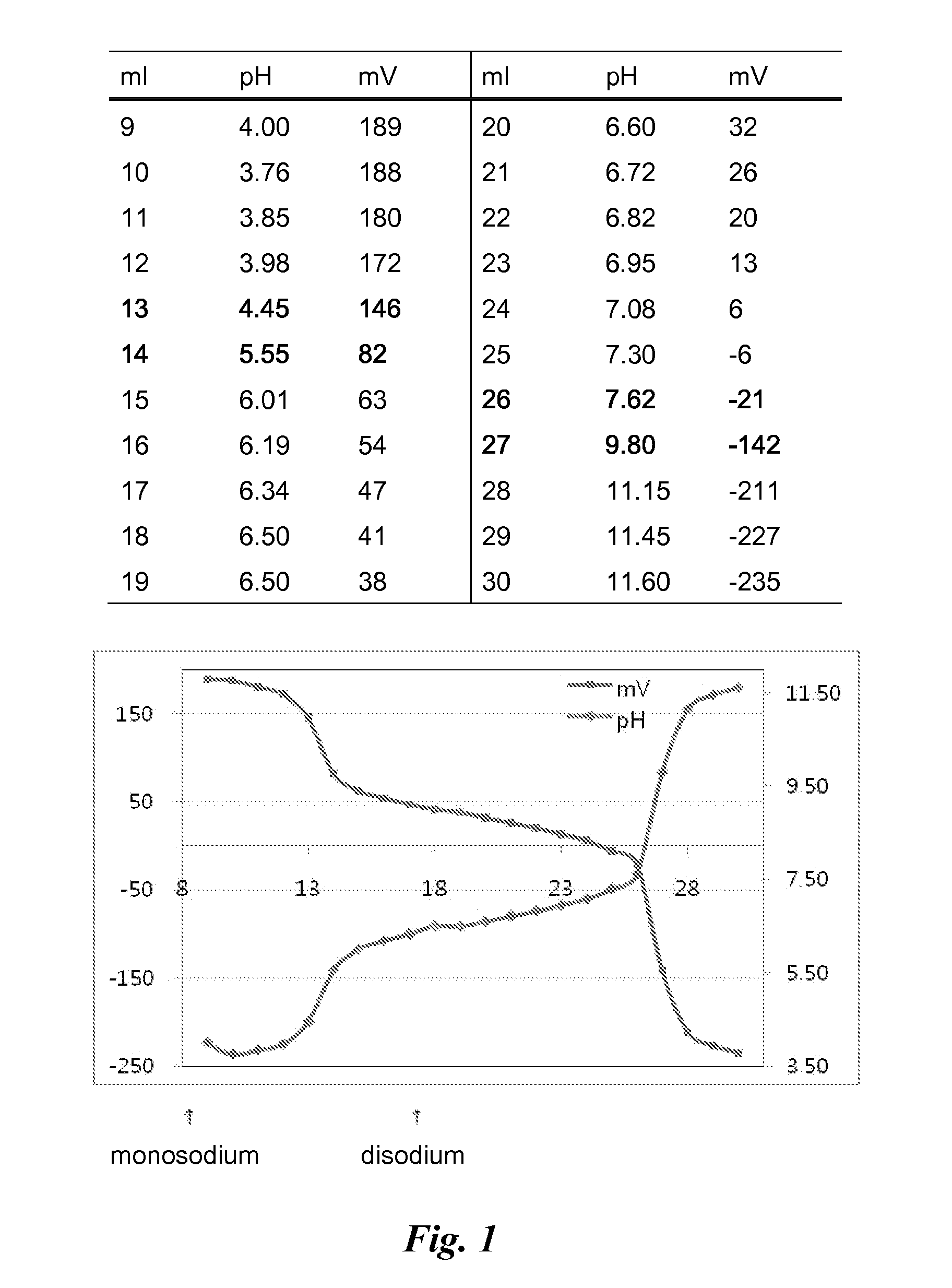Novel compounds of reverse-turn mimetics, method for manufacturing the same and use thereof
a technology of reverse-turn mimetics and compounds, applied in the direction of biocide, group 5/15 element organic compounds, drug compositions, etc., can solve the problem that not many compounds have high bioactivity, and achieve the effect of suppressing the growth of acute myeloid leukemia
- Summary
- Abstract
- Description
- Claims
- Application Information
AI Technical Summary
Benefits of technology
Problems solved by technology
Method used
Image
Examples
example 1
Synthesis of S3
2-(1-allyl-4-benzylsemicarbazido)acetic acid
[0083]67 g of ethyl hydrazinoacetate was dissolved in 673 ml of THF (tetrahydrofuran) and mixed with 121 ml of TEA (triethylamine). To this reaction mixture was dropwise added 41 ml of allyl bromide over 20 min. This solution was stirred for 5 hrs and filtered. To the filtrate was dropwise added 53 ml of benzylisocyanate over 15 min, followed by stirring for 30 min at room temperature. Thereafter, a solution of 48 g of KOH (potassium hydroxide) in 673 ml of distilled water was dropwise added before stirring for 30 min. Layer separation was generated by adding 403 ml of MC (dichloromethane) and 269 ml of hexane and stirring. The aqueous solution was washed once with 201 ml of MC (dichloromethane). The aqueous solution was adjusted to a pH of 2˜3 by using 100 ml of conc. HCl. After being stirred for 30 min, the pH-adjusted solution was extracted with 1009 ml of MC (dichloromethane). The MC (dichloromethane) layer thus obtained...
example 2
Synthesis of P9
3-acetyl-1H-indole-7-carbaldehyde
[0085]23.5 ml of AcCl(acetylchloride) was dropwise added to a solution of 55 g of AlCl3 in 400 ml of MC (dichloromethane) with stirring. To this solution was dropwise added a solution of 40 g of the starting material (indole-7-carbaldehyde) in 400 ml of MC (dichloromethane). The temperature of the solution must be maintained at 0˜5° C. upon the addition and then allowed to increase to room temperature. The progress of the reaction was monitored using thin layer chromatography (TLC) and high performance liquid chromatography. After the reaction was completed, the solution was subjected to layer separation with water. The organic layer thus formed was dried over MgSO4 (magnesium sulfate), filtered and then concentrated at 40° C. to give 41 g of P9 as concentrated residue (yield 80%).
example 3
Synthesis of P8
3-acetyl-1-methyl-1H-indole-7-carbaldehyde
[0086]41 g of P9 was dissolved in 412 ml of DMF (dimethylformamide) and stirred. After the solution was cooled to 10° C., 91 g of K2CO3 (potassium carbonate) was added thereto, and 20 ml of MeI (methyliodide) was dropwise added. The resulting solution was allowed to increase in temperature to room temperature and was stirred for 4˜5 hrs. When the starting material was recognized as disappearing, K2CO3 was filtered off, followed by crystallization in hexane to give 35 g of P8 as a yellowish solid (yield 80%).
PUM
| Property | Measurement | Unit |
|---|---|---|
| Power | aaaaa | aaaaa |
| Power | aaaaa | aaaaa |
| Power | aaaaa | aaaaa |
Abstract
Description
Claims
Application Information
 Login to View More
Login to View More - R&D
- Intellectual Property
- Life Sciences
- Materials
- Tech Scout
- Unparalleled Data Quality
- Higher Quality Content
- 60% Fewer Hallucinations
Browse by: Latest US Patents, China's latest patents, Technical Efficacy Thesaurus, Application Domain, Technology Topic, Popular Technical Reports.
© 2025 PatSnap. All rights reserved.Legal|Privacy policy|Modern Slavery Act Transparency Statement|Sitemap|About US| Contact US: help@patsnap.com



